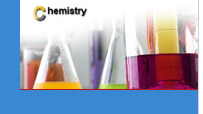过去 10-12个月里,石油蜡价格的增长增加了使用氢化植物蜡替代石油蜡的利益。原油平均成本达到每桶64美元,比一年前高40%。因此,石油蜡的价格也达到了创记录的水平。估计目前精炼石蜡的售价超过1.10美元/公斤,有报道说油槽车装的60℃的石油蜡的售价高达1.32美元/公斤。
氢化植物蜡正在被推广用作石油蜡的替代品,因为它们的价格稳定、供应稳定。植物油是三种脂肪酸和多羟基化合甘油混合的甘油三酸酯。甘油三酸酯中的脂肪酸包括以下饱和酸: C6(己酸)、C8(辛酸的)、C10(癸酸的)、C12(月桂酸的)、C14(肉豆蔻的)、C16(棕榈的)、C18(硬脂酸的);甘油三酸酯还包括以下不饱和酸:三个都是不饱和的C16(棕榈油酸)或C18(亚麻酸)、两个不饱和的C18(亚麻酸)、和一个不饱和C18(油酸)。植物油氢化物能减少不饱和、提高熔点、或者在充分氢化后可得到一种更硬的蜡原料。
目前,只有两种氢化植物蜡在被考虑用作石油蜡的替代品,主要是因为它们可稳定地大量获得、且成本最低。它们是大豆油和棕榈油。 大豆油 由 84%的不饱和脂肪酸构成,特别是亚麻酸,它的平均含量是48-53%。大豆油中的饱和脂肪酸有:棕榈酸占9-12%、硬脂酸占3-5%; 棕榈油 ,是一种饱和和不饱和脂肪酸的50/55比例的混合物。主要的脂肪酸是棕榈酸,平均比例是37-47%,及少量的其它酸:月桂酸占4-8%、硬脂酸占2-5%。主要的不饱和脂肪酸是油酸,一种占31-44%的单不饱和酸,及少量的棕榈油酸和亚麻酸。棕榈油的碘价是13.5,表明有少量不饱和物。因此,不必象氢化大豆油那么充分,就可从棕榈油中氢化出蜡原料来。
因为高度的不饱和,所以大豆油的碘价是 132-147。在已知浓缩溶液中,碘被滴定入溶解在溶剂中的有精确数量的植物油中。碘立即和 双键发生反应,产生清亮的溶剂。因为所有的双键都在反应,当一直呈现碘的颜色时,最终点就出现了。那么,就可以计算植物油的 碘价了。
2005年的植物油全球产量估计是1.15亿吨。到目前为止,棕榈油和大豆油的产量最大,是全球植物油产量的60%。棕榈蜡产量在2004年第一次超过大豆油的产量。下表列出的是植物油的全球产量(单位是万吨):
植物油 |
万吨 |
植物油 |
万吨 |
棕榈油 |
3480 |
棉花籽 |
493 |
大豆油 |
3387 |
棕榈仁 |
420 |
油菜籽 |
1659 |
椰子 |
327 |
向日葵籽 |
1046 |
橄榄 |
228 |
花生 |
493 |
总计 |
11506 |
美国是世界上大豆油产量最大的国家,估计 2005年的产量为1千多万吨。在过去的五年里,美国的大豆油产量在834.61万吨至907.19万吨之间,2005年氢化大豆蜡的产量估计在2.27万吨。美国不生产棕榈油,但是2005年大约进口了49.90万吨棕榈油,比2004年的34.47万吨和2000年的18.14万吨增长了。(相信棕榈蜡已包含在总数中了。)2005年时,大豆油的价格在每公斤0.46-0.51美元(粗级、油槽车、FOB 美国迪凯特镇 )。 2005年棕榈油的高价期是年初,高达每公斤0.75美元;低价期是11月和12月,每公斤0.64美元(精炼级、液体拼装、美国港口)。
The escalation of petroleum wax prices over the past months has accelerated the interest in the use of hydrogenated vegetable oils as a replacement or substitute for petroleum waxes. Crude oil costs refiners an average a record $64 a barrel, about 40 percent higher than a year ago. As a result, petroleum waxes prices are also at record levels.
Hydrogenated vegetable oil waxes are being promoted as a substitute for petroleum waxes due to their stable pricing and ready availability. Vegetable oils are triglycerides of a mixture of three fatty acids with glycerines as the alcohol or polyol. The fatty acids in triglycerides include the following saturated acids-C6(caproic),C8(caprylic),C10(capric),C12(lauric),C14(myristic),C16(palmitic), and C18(stearic).Triglycerides also include the following unsaturated acids; C16(palmitolenic) and C18(linolenic) both tri-unsaturated; C18(linolenic) di-unsaturated; and C18(oleic) mono-unsaturated. Hydrogenation of vegetable oils reduces unsaturated; increases the melting point so that at ambient temperatures, the hydrogenated product is either as soft solid, or with sufficient hydrogenation, a harder, wax like material.
At the present time, only two hydrogenated vegetable oil waxes are under consideration as replacements for petroleum waxes, mainly because they are available in large quantity and lowest in cost. These are soy oil and palm oil. Soy oil is comprised of 84 percent un-saturated fatty acids, in particular linolenic acid at an average of 48-53 percent. The saturated fatty acids in soy oil include palmitic acid at 9-12 percent and stearic acid at 3-5 percent. Palm oil, on the other hand, is comprised of a 50/50 mixture of saturated and unsaturated fatty acids. The predominant fatty acid is palmitic, averaging 37-47 percent with small amounts of lauric acid at 4-8 percent and stearic acid 2-5 percent. The primary unsaturated fatty acid is oleic acid, a monounsaturated fatty acid at 31-44 percent with smaller amounts of palmitolenic and linoleic acid. The iodine number of palm oil is 13.5, and indication of the minor amount of unsaturation present. As a result, hydrogenation of palm oil to obtain a waxy material does not require as much hydrogenation as it does for soy oil.
As a result of the high degree of unsaturation, the iodine number of soy oil ranges between 132-147. Iodine in a solution of known concentration is titrated into a precise quantity of vegetable oil dissolved in a suitable solvent. Iodine reacts instantaneously with double bonds, yielding a clear solution. As all the double bonds are reacted, the end point occurs when the color of iodine persists. It is then possible to calculate the iodine number of the vegetable oil.
Global production of vegetable oils in 2005 is estimated at 115 million metric tons(253 billion pounds). Palm oil and soy oil are the largest volume by far, accounting for 60 percent of global vegetable oil production. Palm oil production exceeded soy oil output for the first time in 2004. |
